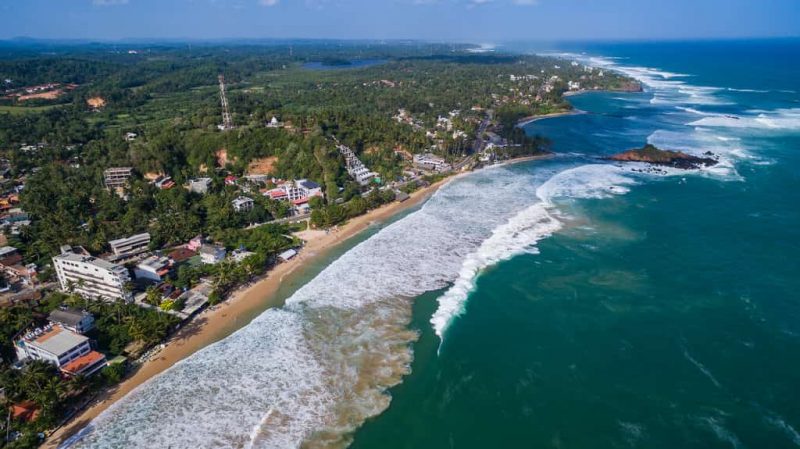Dondra or Dewundara
Sri Lanka’s southern part has always been important for the island in many ways. Many cities on southern Sri Lanka such as Tissamaharama, Dondra, Matara has very important cultural, historical importance. Citile like Hambantoita with an international airport, Internation harbour and industrial zones plays and vital role in the island’s economy.
Tourism has been able to get some traction over the last few years and many international players in the hospitality industry have set up their branches here. Dondra is located just south of Matara and Mirissa.
The most striking feature of Matar and Mirissa are its pristine beaches, they attract a large number of beach holiday lovers. These beaches are largely uncrowded compared to beach holiday destination on the west coast. Dondra also possesses a large tract of the breathtaking beach, but hardly any tourist.
Dondra temple
Dondra or Dewundara is the most popular religious temple near the city of Matara and it is the southernmost point of the island. The exact date when the veneration of the temple began is mysterious according to the comment of Roland Raven-Hart (1964), but historical evidence suggests that the worships of the temple began at the beginning of 7th Century AD. Temple is picturesquely located near the endless ocean on one side of it.
Historical facts about Dondra
Dondra was visited by Ibn Batuta (probably one of the most popular travellers in the medieval period) about three centuries ago. According to Ibn Batuta, there had been a life-size image made of gold in the temple, whose eyes were two rubies of great value. The temple premises had been sheltering 1000 priests.
Ibn Batuta had further elaborated the magnitude size of the region and most of the inhabitants of the city had been merchants. The temple is visited by Buddhist and Hindus but primarily it is dedicated to God Vishnu, especially his birth as Rama in which he rescued abducted Seetha from King Rawana. It is believed that God of war (Skanda or Murugan) had landed here on his way to Kataragama.
Importance of Dondra
The temple of Dewundara (Devinuwara or Dewundara means the city of God – the god being Vishnu) was destroyed by Portuguese army under the commander Da (Diego) Couto; they had described the temple as the greatest pilgrimage site after Sri Pada or Adams peak. It had been a beautiful city of a full league in the circuit as the raiding party invaded the city. There had been a Dagoba in magnitude size, which had the vaulted roof with elegant wood carvings. At the entrance of the dagoba, they had seen a tall and strong tower which had a roof with gilded copper.
A Quadrangle of the temple was built with verandah and terraces adorned with flowers and sweet-smelling herbs. According to the dramatic description of the devastation that the Portuguese had committed at the site. First, they had destroyed the idols that were in great numbers (more than 1000). They had destroyed all the temple equipment and they were made to small pieces.
Looting the valuables of Dondra
The group of Portuguese had looted the stores at the end. There was a large number of valuables such as ivory, fine stuff, copper, pepper, sandalwood, jewels, gems, and temple ornaments among the looted items. They had taken as much as they could while the rest of the valuables were made to ash. They had killed cows at the temple premises in order to discrete the religious site.
According to the description made by Portuguese, the temple was located on a hill not far from the city. Most of the construction of wood and brick were destroyed by Portuguese. The stone sanctuary that still survives was made of granite. The small shrine was barely ornamented; a red-coloured figure of God Vishnu made of sandalwood was placed in the shrine room.
Archaeologists opine that second temple was located more towards the beaches of the island from Dewundara temple. It is believed to be visited by both Buddhist and Hindus. Writers of the island that lived a few centuries ago had described the remnants of the temple. A book was written by Major Forbes “Eleven Years in Ceylon” mentions hundreds of upright stone pillars at the site.
Today Duwundara temple has a prominent place among the religious sites in the country. It is visited by believers of Buddhism and Hinduism. There is a huge standing Buddha image at the site with other small image houses dedicated to various gods and goddesses.

